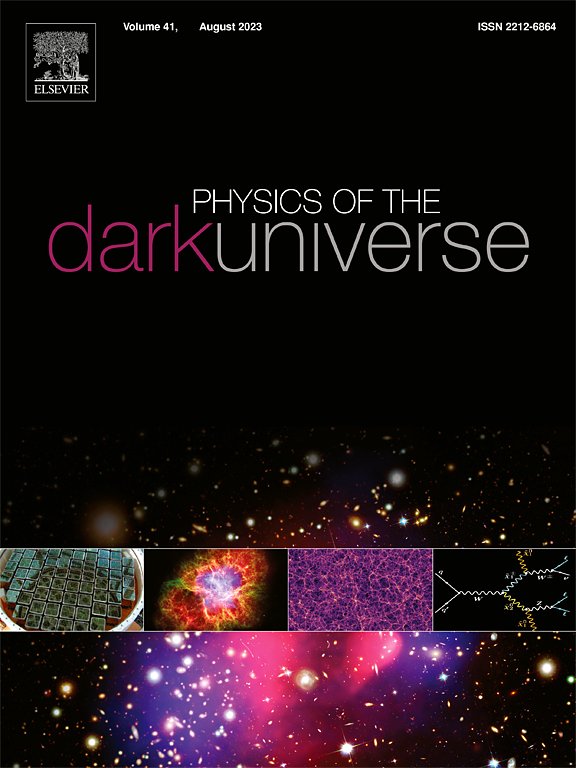Resilience and implications of adiabatic CMB cooling
IF 5
2区 物理与天体物理
Q1 ASTRONOMY & ASTROPHYSICS
引用次数: 0
Abstract
We investigate potential deviations from the standard adiabatic evolution of the cosmic microwave background (CMB) temperature, , using the latest Sunyaev-Zeldovich (SZ) effect measurements and molecular line excitation data, covering a combined redshift range of . We follow different approaches. First, we reconstruct the redshift evolution of in a model-independent way using Gaussian Process regression. The tightest constraints come from SZ measurements at , while molecular line data at yield broader uncertainties. By combining both datasets, we find good consistency with the standard evolution across the full analysed redshift range, inferring a present-day CMB monopole temperature of K. Next, we test for deviations from the standard scaling by adopting the parametrisation , where quantifies departures from adiabaticity, with corresponding to the standard scenario. In this framework, we use Gaussian Process reconstruction to test the consistency of across the full redshift range and perform minimisation techniques to determine the best-fit values of and . In both cases, we find good consistency with the standard temperature-redshift relation. The -minimisation analysis yields best-fit values of and K, in excellent agreement with both and independent direct measurements of from FIRAS and ARCADE. We discuss the implications of our findings, which offer strong empirical support for the standard cosmological prediction and place tight constraints on a wide range of alternative scenarios of interest in the context of cosmological tensions and fundamental physics.
微波背景绝热冷却的回弹性及其意义
我们利用最新的Sunyaev-Zeldovich (SZ)效应测量和分子线激发数据,研究了宇宙微波背景(CMB)温度(TCMB(z))的标准绝热演化的潜在偏差,覆盖了0<;z≤6的组合红移范围。我们采用不同的方法。首先,我们利用高斯过程回归以模型无关的方式重建了TCMB(z)的红移演化。最严格的约束来自z<;1的SZ测量,而z>;3的分子线数据产生更广泛的不确定性。通过结合这两个数据集,我们发现在整个分析红移范围内与标准演化具有良好的一致性,推断出当今CMB单极子温度为T0=2.744±0.019 K。接下来,我们通过采用参数化TCMB(z)=T0(1+z)1 - β来测试与标准尺度的偏差,其中β量化了与绝热的偏离,β=0对应于标准情景。在这个框架中,我们使用高斯过程重建来测试β=0在整个红移范围内的一致性,并执行χ2最小化技术来确定T0和β的最佳拟合值。在这两种情况下,我们发现与标准的温度-红移关系有很好的一致性。χ2最小化分析的最佳拟合值为β= - 0.0106±0.0124和T0=2.7276±0.0095 K,与β=0和FIRAS和ARCADE对T0的独立直接测量结果非常吻合。我们讨论了我们的发现的意义,这些发现为标准宇宙学预测提供了强有力的经验支持,并在宇宙学张力和基础物理学的背景下对广泛的可选场景施加了严格的约束。
本文章由计算机程序翻译,如有差异,请以英文原文为准。
求助全文
约1分钟内获得全文
求助全文
来源期刊

Physics of the Dark Universe
ASTRONOMY & ASTROPHYSICS-
CiteScore
9.60
自引率
7.30%
发文量
118
审稿时长
61 days
期刊介绍:
Physics of the Dark Universe is an innovative online-only journal that offers rapid publication of peer-reviewed, original research articles considered of high scientific impact.
The journal is focused on the understanding of Dark Matter, Dark Energy, Early Universe, gravitational waves and neutrinos, covering all theoretical, experimental and phenomenological aspects.
 求助内容:
求助内容: 应助结果提醒方式:
应助结果提醒方式:


